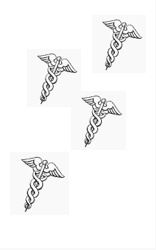By Leslie Kernisan, MD
 Why aren’t people in hospitals more attentive to the needs of patients?
Why aren’t people in hospitals more attentive to the needs of patients?
In a recent post, Dr. Ashish Jha raises this issue as he relates his own story of coming to an ED with a very painful dislocated shoulder. Unsurprisingly, prompt treatment of his pain was deferred while staff diligently completed registration, sent him for an xray, and waited for a physician to see him.
On the bike path where Jha took his initial tumble, people went out of their way to respond to his injury with attention and concern. But as he lay moaning on a gurney in the hospital corridors, waiting for an xray and not yet treated for pain, people avoided his eyes and even walked by a little faster.
What gives? Why aren’t people in the hospital more empathetic and attentive? Is this a “wonderful people, bad system” issue?
In reflecting on his experience, Jha remarks that people seem to leave their humanity at the door when they arrive at the hospital for work, and posits that we get desensitized to suffering. He notes that some workers were able to “break out of that trap,” and responded to him more empathetically when he directly solicited their help and attention.
“It is the job of healthcare leaders to create a culture where we retain our humanity despite the constant exposure to patients who are suffering,” writes Jha.
Culture change is necessary but not sufficient
Culture is important. Yes I’ll admit that I’m usually a bit skeptical when I hear of a plan to tackle a problem through culture change. In my own experience, this has consisted of leaders trying to “create culture” by describing to front-line staff what they should be doing, and repeatedly exhorting them to do it. (And maybe giving out gold stars to those who do it.)
This, of course, is never enough. Talking the talk does not mean people start to walk the walk, especially if the walk involves a slog uphill rather than an easier stroll down a path of lesser resistance.
If we – whether healthcare leaders or just concerned citizens who want to see healthcare improve – really want healthcare workers to demonstrate more compassion and empathy while on the job, then here is what we need to do:
- We should take seriously the task of understanding what might be interfering with this compassion and engagement. This means not only studying workflow, but also the behavioral psychology of individuals as well as groups.
- We should then be serious about creating the conditions that would allow regular human beings to reliably produce the desired behaviors.
Why it can be hard to help people in the hospital
What interferes with showing compassion and engagement? In reading Jha’s piece, I reflected on my own hospital days. Here are the obstacles that I remember, and the impact on me.
Continue reading…


 Several years ago both Microsoft and Google invested millions of dollars on a flawed assumption: If they built a useful and free healthcare application, people would flock to it. In both cases, the effort failed. At its peak Microsoft HealthVault was only able to enroll a few thousand—largely inactive—users. Google Health was discontinued after a few years.
Several years ago both Microsoft and Google invested millions of dollars on a flawed assumption: If they built a useful and free healthcare application, people would flock to it. In both cases, the effort failed. At its peak Microsoft HealthVault was only able to enroll a few thousand—largely inactive—users. Google Health was discontinued after a few years.











